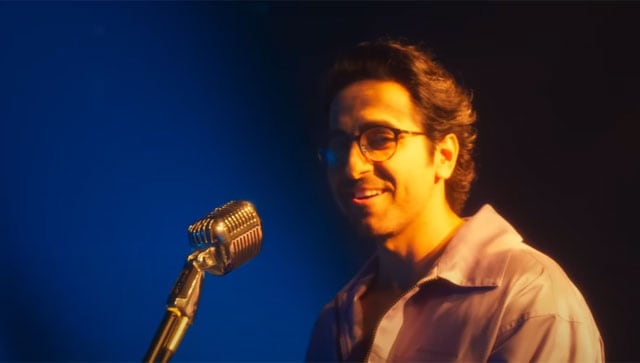Anubhuti Kashyap’s comedy-drama Doctor G has novelty as its soul. The story of a doctor, who joins the gynaecology department for post-graduation because of the absence of seats in his dream option, and his journey from disappointment to sincerity merits cinematic exploration.
What is hardly surprising is the presence of Ayushmann Khurrana in the central role of the bespectacled protagonist. Uday Gupta, his character, has been in a failed romantic relationship. He shares a kiss with a departmental senior, who is engaged to someone else. His mother seeks male friendship on Tinder. The only man in his classroom, he is simultaneously told that many fine gynaecologists are men.
Based on an interesting idea, Doctor G could have been only produced with a reasonable budget minus Bollywood A-listers whose fat pay cheques impede the process of recovery of costs. The film has slowed down at the ticket counters after an acceptably good start in its first weekend. Still, it is the kind of film which, if made decently well, can ensure that its producer doesn’t have sleepless nights.
Why make modestly budgeted films?
Failures hurt. If a film costs moderately, the financial pain inflicted by insufficient theatre attendance is substantially less.
Ayushmann has enjoyed many box-office successes, among them huge ones that have surprised most, leading to his brand identity and more exciting professional opportunities for the actor. His films have capsized, too. He is the male lead in Abhishek Kapoor’s romantic drama Chandigarh Kare Aashiqui, which centres around a fitness lover (Ayushmann) and a Zumba trainer (Vaani Kapoor). The plot has a twist nobody would expect. The film failed to make an impact at the box office.
Anubhav Sinha’s socio-political drama Anek undertakes a journey to the North East, which makes it a thematically significant film. It did not impress the viewer because its messaging lacked focus and transparency, resulting in a box office dud.
However, Ayushmann is a much-in-demand actor. He has an impressive track record and a predominantly urban fan following, resulting in a better possibility of commercial success without much financial risk for the producer.
The male lead charges significantly less
Bollywood is notorious for overpaying its superstars, which implies male leads in the big-budget space. Some of them had added more crores to their already unreasonable fees after the pandemic, with one superstar supposedly asking for more than Rs 100 crore from the producer. Spending that much on any actor is a big risk, no matter how cash-rich the producer might be, especially when expensive Bollywood films have been sinking at the box office with an unheard-of frequency.
Regardless of gender, the lead actor in a modestly budgeted film will charge much more than a few lakhs. That said, how much can the person charge when the entire budget of a film is Rs 30-40 crore or less?
Interesting themes
The safety-first strategy that either emphasizes tried and tested themes or compels the filmmaker to explore the idea of a remake is rarely successful. Khurrana is a visible metaphor for participation in experimental filmmaking that is as much about possibilities offered by reasonable budgeting as it is about social messaging.
Films originating from a same-sex relationship (Hitesh Kewalya’s Shubh Mangal Zyada Saavdhan) and another that tackles caste discrimination (Anubhav Sinha’s Article 15) have socially relevant subjects that need to reach out to the masses through films. But can the producer tackle such projects with big budgets? That’s a big risk, since the average Indian viewer living outside urban areas may not accept the choice and treatment of such themes.
Creation of a democratic playground
A producer, who cannot or does not wish to spend much, might be willing to stick his neck out for a project with an exciting idea. A good enough chance of commercial success will encourage more participation from such individuals, and their films will compete for the viewer’s attention with big-ticket releases. That, in fact, is already happening. Moreover, many films solely made for OTT platforms are contributing to diversity in cinema.
Although the reach of OTT platforms is restricted to urban areas, by and large, successful ones among them will add many more subscribers to their lists with time. That will multiply the creation of idea-driven films targeting new subscribers outside urban areas who will learn to accept novelty with time.
What is urban and offbeat today will be mainstream tomorrow. Which artistically inclined producer can ask for more?
The author is a freelance writer. Views expressed are personal.
Read all the Latest News, Trending News, Cricket News, Bollywood News,
India News and Entertainment News here. Follow us on Facebook, Twitter and Instagram.

